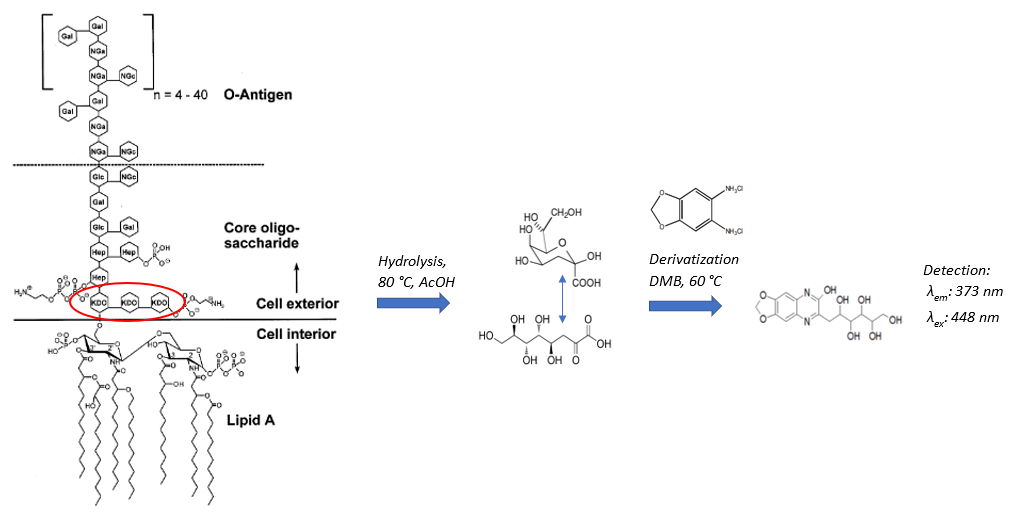Quantification of endotoxins in bacterial bioreactor samples and correlation of the endotoxin content to optical density and dry cell weight
The novel chemical Kdo-DMB-LC endotoxin (ET) assay [1] allows the accurate and economic determination of the ET content in supernatants of Gram-negative bacteria bioreactor samples.
During mild acidic hydrolysis, the ET specific sugar acid 3-deoxy-D-manno-oct-2-ulsonic acid (Kdo) is quantitatively released. Kdo is reacted with 1,2-diamino-4,5-methylenedioxybenzene-2 HCl (DMB) to obtain the highly fluorescent derivate Kdo-DMB. It is separated from the reaction mixture by RP-HPLC and detected by fluorescence. The Kdo content is converted to the ET content of the sample.
The evolution of the ET content in dependence on the cultivation time is shown for two batch cultivations of Escherichia coli K12 and a fed-batch cultivation of Pseudomonas putida KT2440. A linear correlation between the ET content and the easy-to-access bioreactor parameters optical density (OD600) and dry cell weight (dcw) is presented. It follows that OD600 and dcw may serve as leading indicators for an economic real-time estimation of the ET content at different cultivation time points and cultivation conditions, e.g., in production bioreactors. The OD600 can further be used to establish simple sample dilution schemes for ET quantification in samples of unknown ET content, e.g., for the Limulus Amoebocyte Lysate (LAL) or the Kdo-DMB-LC assay. The ET content measured with the Kdo-DMB-LC assay [ng / mL] and the ET activity obtained by the compendial LAL assay [endotoxin units (EU) / mL] showed a high correlation for both bacteria bioreactor samples.

Working scheme of the Kdo-DMB-LC assay, endotoxin molecule adapted from [2]
[2] Dagmar Petsch, Friedrich Birger Anspach, Journal of Biotechnology, 2000, 76, 79-119